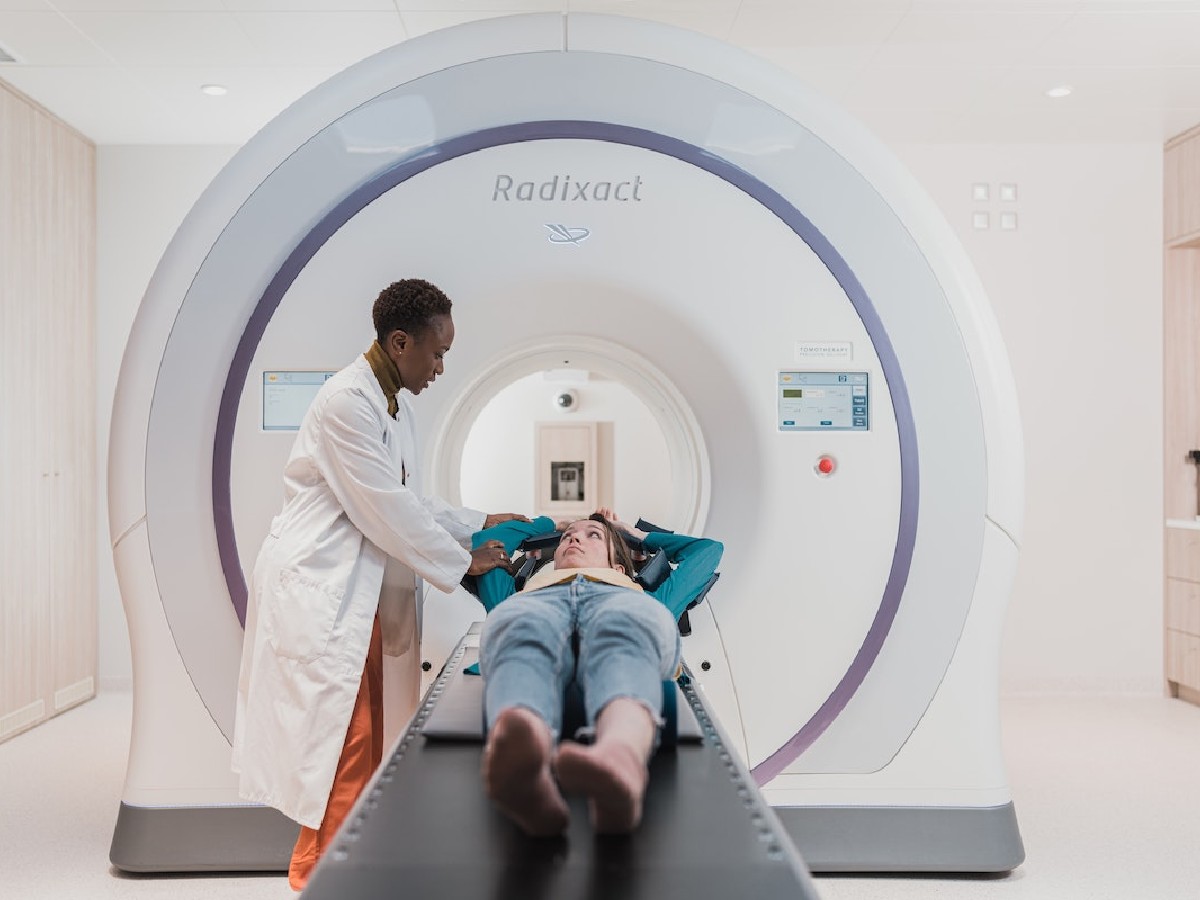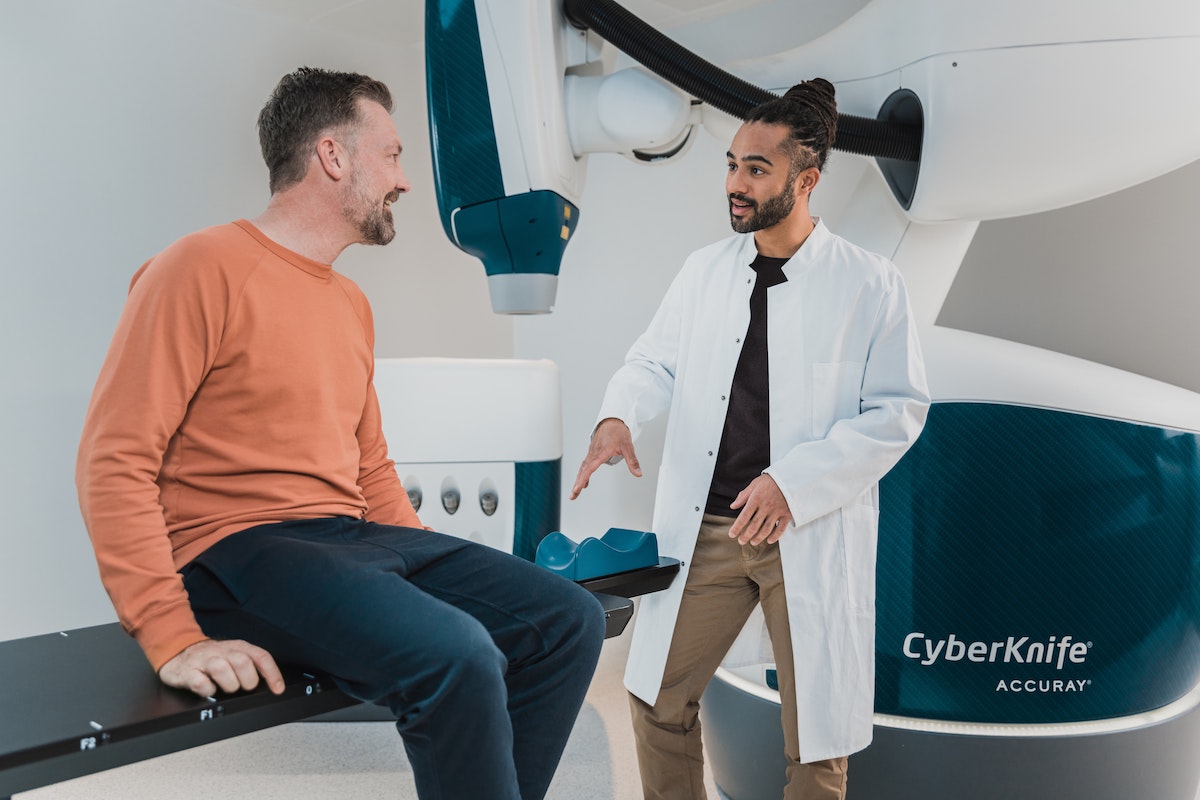The majority of cancer patients worldwide — two-thirds of them[1] — will go through some form of radiation therapy as part of their treatment. In the United States, it is estimated that more than 1 million cancer patients will receive treatment with radiation therapy this year alone.[2] But one of the biggest problems with radiation therapy is that there’s not nearly enough when and where it’s needed most. In the U.S., there are 13 medical linear accelerator (LINAC) devices, or radiation machines, for every 1 million patients. In emerging markets there are only two per 1 million patients.[3] These statistics underscore one of the biggest challenges in radiation therapy: access.
To address this challenge, first in the U.S. and then beyond, GE Healthcare and Accuray Incorporated, a company that makes radiation therapy machines and software, have entered into a new collaboration to expand access to GE Healthcare’s advanced imaging tools and Accuray’s radiation therapy technologies — with the goal of enabling the treatment of more patients more quickly.
“If a patient knows they have cancer and the treatment is scheduled several weeks from diagnosis or treatment plan, it’s a traumatic experience,” says Ben Newton, GE Healthcare’s general manager for oncology. “We want to help patients get through the process from diagnosis to treatment as fast as possible. By coming together, we are working to help improve detection and speed up treatment for more patients.”
“Each of us is unique, and the diseases that impact our lives, such as cancer, reflect our individuality. That’s why a personalized approach to treatment is so important,” says Suzanne Winter, president and CEO of Accuray. “At Accuray, we are focused on developing radiation therapy technology that enables medical care teams to easily adapt treatment to the needs of their patients every time they receive care. We collaborate with industry-leading organizations, such as GE Healthcare, to expand the potential of our technologies and the number of people who can potentially be helped.”
The treatment process has several steps. It starts with body scans to detect the tumors and lesions. If doctors decide that radiation is necessary, they devise a treatment plan and run a simulation to determine the correct placement and dosage, so they won’t damage the healthy parts of a patient’s body.
As advanced imaging continues to enable earlier diagnosis and identification of smaller lesions, the need for precision and accuracy of treatment is critical to helping clinicians diagnose and treat earlier-stage cancers with confidence. The goal of this collaboration is to use GE Healthcare’s image scans and Accuray’s treatment-planning technology to bring more precision to targeting tumors and lesions.
The GE Healthcare–Accuray collaboration will initially focus on addressing challenges in the treatment of lung and brain cancers, with an emphasis on early and precise detection and personalized treatment.
This collaboration is consistent with GE Healthcare’s approach to working with multiple systems from multiple vendors and adds to the other strategic collaborations announced earlier this year with other radiation therapy leaders such as Elekta and RaySearch. “GE Healthcare is a supporter of an image-guided radiation therapy ecosystem that’s open to all vendors and innovators,” says Newton. “Ultimately, through the simple interoperability of advanced systems, patients and providers can have the best of both worlds — the worlds of standardization and specialization. We believe both are critical to enabling the best health, economic, and clinical outcomes for providers and patients.”
REFERENCES
[1]American Society for Radiation Oncology, ASTRO Legislative Priorities, 2015, https://www.astro.org/uploadedFiles/Main_Site/Meetings_and_Events/2015_Advocacy_Day/Advocacy%20Day%20-%20iPad%20-%20(Linked).pdf.
[2] Calculation based on American Cancer Society, “Cancer Facts & Figures 2022,” https://www.cancer.org/research/cancer-facts-statistics/all-cancer-facts-figures/cancer-facts-figures-2022.html. In 2022, there will be an estimated 1.9 million new cancer cases diagnosed, and 609,360 cancer deaths in the United States. Many people with cancer need treatment with radiation therapy. In fact, about 60% of people with cancer have radiation therapy. See National Cancer Institute, Radiation Therapy and You: Support for People with Cancer, https://www.cancer.gov/publications/patient-education/radiation-and-you-2021-508.pdf.
[3] Frost & Sullivan Analysis, 2019.


